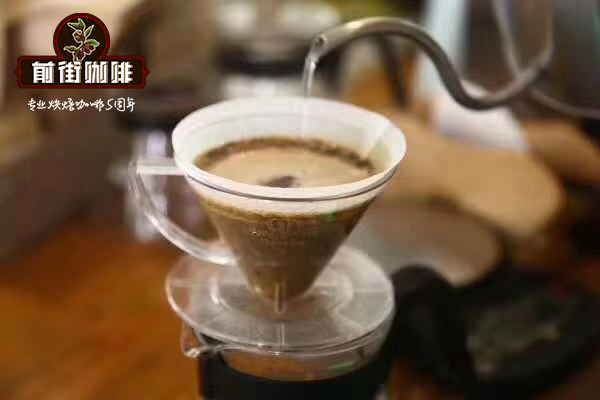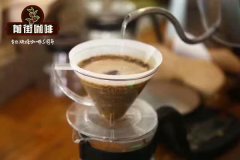How to use the boutique coffee flavor wheel? is there a buff bonus to the coffee appraiser flavor wheel?

Professional coffee knowledge exchange More coffee bean information Please pay attention to coffee workshop (Weixin Official Accounts cafe_style)
Front Street-Coffee Flavor Wheel Introduction
The Flavor Wheel, designed by the American Specialty Coffee Association in conjunction with the World Coffee Laboratory WCR, helps you taste coffee and test cups. Since the Flavor Wheel is an auxiliary tool, meaning it can be used intuitively, here are a few tips for using the Flavor Wheel:
Step 1: Overview of the Flavor Wheel
Flavor wheel is not only practical but also beautiful, just like a good cup of coffee, it comprehensively describes the coffee flavor, first browse these flavor descriptions and absorb these words, you may see some unfamiliar words, but it does not matter, we will come back to this part later, first look at the flavor written in this picture!
Step 2: Taste the coffee
The flavor wheel can be applied to informal or professional coffee cups. In any case, the key to cup testing is to taste coffee intuitively, carefully prepare the cup testing program, and taste coffee from different aspects: dry aroma after grinding, wet aroma after pouring water, and flavor when sipping. We define flavor as the combination of taste and olfactory receptors, and the flavor wheel encompasses both taste (sensed by the tongue) and smell (sensed by the nose). However, most of the taste is only a mixture of sensations, such as lemon acid and aroma, sweetness, bitterness, special aroma. Remember the coffee flavor you drank, and then look at the flavor wheel.
Step 3: Start at the center of the flavor wheel
First, from the center of the flavor wheel from the inside to the outside, the more generalized the description, the closer to the center, the more accurate the description, the more peripheral. It can be used anywhere on the flavor wheel; the more peripheral the user can see, the more specific and precise the flavor will be described. For example, a user might taste Ethiopian coffee and experience fruity flavor, and then look at the fruity section, and the user might have different descriptive words: fruity means berry? Dried fruit? Citrus? Or other fruits? If citrus fruit is chosen, there are more explicit descriptions of grapefruit, orange, lemon or lime. When the flavor is found, it goes back to the center of the flavor wheel and starts looking for another flavor, repeating this action until everyone thinks the flavor of the coffee has been completely described. This is the basic function of the flavor wheel and is also very easy to use. However, the flavor wheel can be more than that, and professional users can use it further.
Step 4: Read the words
The coffee flavor wheel is based on the "coffee sensory dictionary" compiled by World Coffee Research, allowing users to taste coffee according to scientific basis. Even if many people don't use it to train their taste buds, this dictionary can still help you use the flavor wheel. Each flavor attribute has its definition and data source, allowing users to view specific words. Flavor wheels and sensory dictionaries work well together and can be traced back to the source of a word if desired. Dictionaries are not only tools for training us to describe flavors, but also good reference information for professional cup testers. Although there are many unfamiliar chemical or technical terms, there are clear explanations and sources.
Step 5: Refer to Flavor Sources
WCR has a source for each word, and many of them are easily available in everyday life such as supermarkets or on the Internet. But remember that aroma cannot be observed, flavor may be, so it is necessary to increase the connection between aroma and flavor by tasting and smelling coffee. It is suggested that you can smell it with a cup, let the aroma concentrate, write down the pen you feel, and then link the flavor you feel through recollection.
Step 6: Return to the center of the flavor wheel
As you learn the words in the dictionary (and may sometimes quote one or two words), sip the coffee and return to the center of the flavor wheel to describe flavor for a particular word. If two words are connected together on the graph, it means that the professional tester thinks they are closely related in terms of attributes; if there is a space in the middle, it means that the tester thinks they are not very related. Further, if the space in the middle of the flavor wheel is large, it means that the classification is not very relevant; if you are doing taste correction, this will be very helpful for the cup tester in describing the flavor, or for most people to understand the flavor you describe.
If the two words are closely arranged, it means that the flavor correlation is high.
If there is a space, it means that the relevance of the word is low.
Step 7: Use your own description
The advantage of using these tools is that they can become a common language for cup testing. Coffee makers can understand and use the descriptions on the flavor wheel. With it in the cup testing room or coffee shop, they can communicate in a common way. While it is good to use as much description as possible, it makes communication more difficult. So focusing on common language is what we're looking for when we talk about coffee.
Step 8: Study the colors on the map
Our visual senses are strongly connected to other senses, and the appearance of food affects our associations with its taste, which is why we often use visual descriptions of flavor: this cup of coffee tastes "bright" or "red" or "green". Because of this discovery, we pay special attention to the color on the flavor wheel and try to link the color attributes of the word. This may help the hesitant cupper find a description, and if the cupper can only say "it tastes like some kind of red fruit," look at the red block on the flavor wheel. "Something brown" will lead the cupper to the left of the flavor wheel, where it may be a spicy spice or cereal flavor.
Knowledge Point: The famous Counter Culture Coffee in the United States has launched a new Coffee Tasters Flavor Wheel, which is based on the traditional version of SCAA, but is more timely and contemporary.
In brief: Qianjie is a coffee research center, happy to share knowledge about coffee with everyone, we share it without reservation only to let more friends fall in love with coffee, and there will be 3 low discount coffee activities every month, because Qianjie wants to let more friends drink the best coffee at the lowest price, which is also the purpose of Qianjie for 6 years!
END
Important Notice :
前街咖啡 FrontStreet Coffee has moved to new addredd:
FrontStreet Coffee Address: 315,Donghua East Road,GuangZhou
Tel:020 38364473
- Prev

Is the coffee cup flavor wheel just a reference? the scientific engineering behind the new coffee flavor wheel?
Professional coffee knowledge exchange more coffee bean information please follow Coffee Workshop (Wechat official account cafe_style) Front Street-Coffee Flavor Wheel introduction Coffee Flavor Wheel was developed in 1995 by TED LINGLE (Ted), former president of the Fine Coffee Association of America. Made by Mr. Ringer and others. The coffee flavor wheel was born to use the same common language, in a way that everyone can understand.
- Next

What is the Flavor Wheel of Fine Coffee? understand the aroma of coffee.
Professional coffee knowledge exchange more coffee bean information please follow the coffee workshop (Wechat official account cafe_style) front street-introduction to the use of coffee flavor wheel in addition to good-looking, coffee flavor wheel is actually a real language tool. The senses in coffee are no different from those in daily life. If you can drink today's soup is saltier than yesterday's, you can drink the change of coffee flavor.
Related
- Beginners will see the "Coffee pull flower" guide!
- What is the difference between ice blog purified milk and ordinary milk coffee?
- Why is the Philippines the largest producer of crops in Liberia?
- For coffee extraction, should the fine powder be retained?
- How does extracted espresso fill pressed powder? How much strength does it take to press the powder?
- How to make jasmine cold extract coffee? Is the jasmine + latte good?
- Will this little toy really make the coffee taste better? How does Lily Drip affect coffee extraction?
- Will the action of slapping the filter cup also affect coffee extraction?
- What's the difference between powder-to-water ratio and powder-to-liquid ratio?
- What is the Ethiopian local species? What does it have to do with Heirloom native species?

